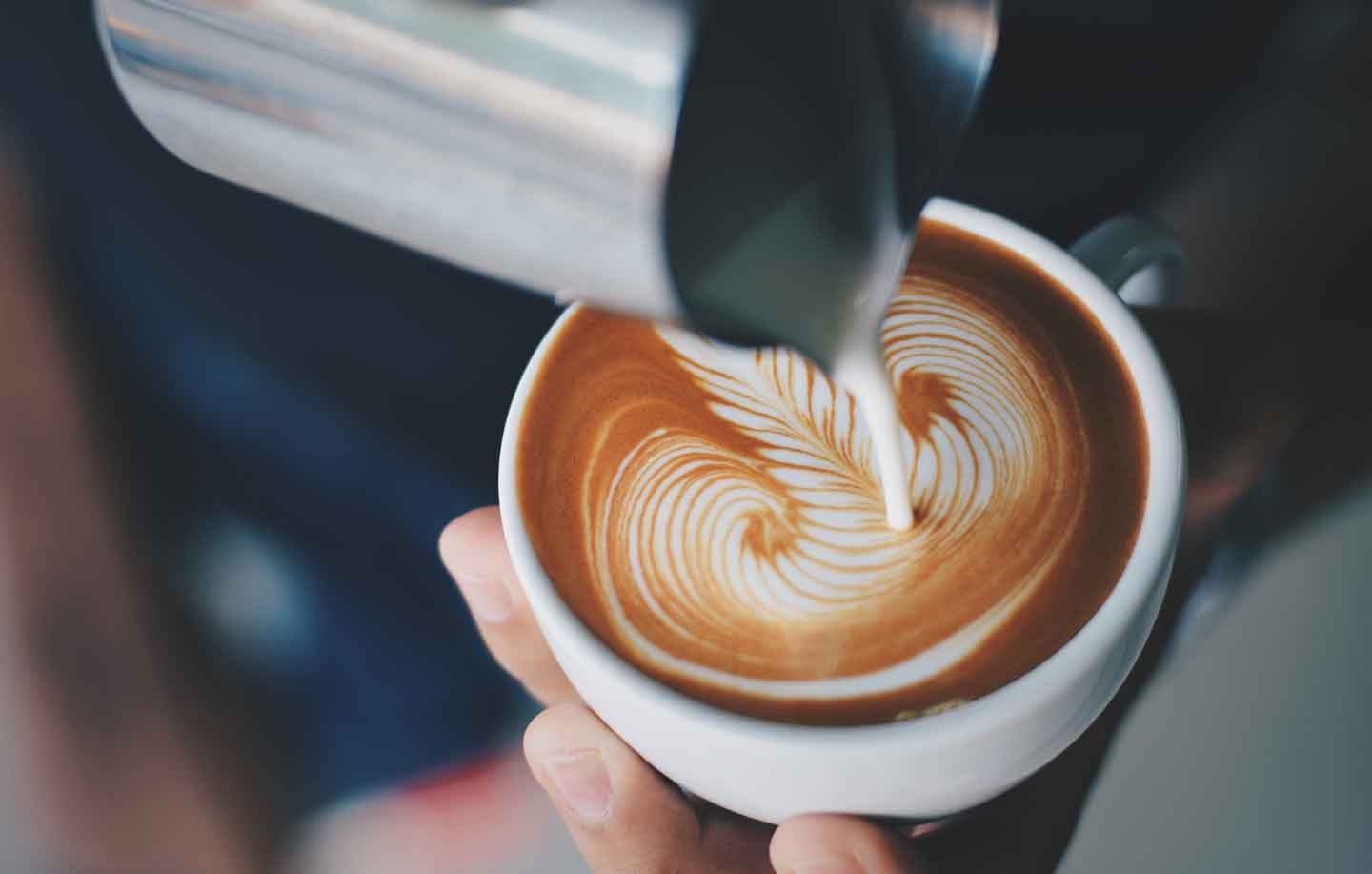Latte Art: decorated cappuccinos that passion!

To create a delicious cappuccino, an excellent freshly extracted espresso and perfectly whipped milk are essential, allowing you to create a soft and velvety cream. These ingredients are indispensable not only to ensure an exceptional taste, but also to allow the barista to express his creativity through Latte Art, a decoration technique increasingly popular among coffee lovers. Thanks to this practice, Italian baristas are showing an increasing attention to professional training, adding a touch of art and precision to every cappuccino they prepare.
But what is the origin of this fascinating practice? It is said that Latte Art had its roots in the 80s thanks to a barista from Verona, although it was David Schomer from Seattle who brought it to the fore in 1988 with the famous heart on the cappuccino, became a symbol of Espresso Vivace. In 1994, instead, it was the turn of the leaf or "rosetta" that Schomer saw from a photo in an Italian cafe dedicating himself for six months to the perfection of the technique.
After acquiring the basic ability to make hearts and rosettes, a creative bartender can explore a wide assortment of shapes: tulips, swans, rabbits, geometric designs and many other figures. All of these are just some of the possibilities offered in our Latte Art course, which includes a number of advanced techniques for creating fantastic coffee designs.
However, it is important to make a distinction between the elaborate decors used in competitions or for personal challenges and those intended for our customers every day. Latte Art should be a complement to a cappuccino of excellent quality, a touch that adds a smile at the time of service. Often, a heart, a swan, a bear or any other simple but well made design is equally appreciated, if not more, than a highly technical figure.
From theory to practice: creating art with milk in cappuccino
To summarize, to prepare an excellent cappuccino you need a quality espresso and milk whipped to perfection. These two elements are also fundamental to be able to give vent to our creativity and draw on the surface of the cappuccino. Acquiring this skill requires practice and guidance from an experienced barista or a specialized trainer, who can guide us through the learning process.
Let’s then explore the steps needed to master this technique.
FIRST STEP: Preparation of Milk and Espresso
Before you start creating Latte Art, it is essential to have the right tools available. To ensure an optimal basis for decoration, we begin by preparing the appropriate milk. It is important to use fresh, whole and chilled milk. Pour it into the milk can, making sure that it has the ideal truncated-conical shape and is equipped with well-shaped spouts. The milk jug should be made of heat-transmitting material to accurately assess the temperature. Materials such as stainless steel or teflon are usually preferred for their strength and ease of cleaning.
Fill the milk jug to half its capacity and proceed with the vaporization phase, during which the milk increases in volume without escaping from the container. It is advisable to have milk cans of different sizes and capacities to vaporize only the amount of milk needed for each drink. To prepare two cappuccinos, a 0.50 L milk can be enough, but it is also convenient to have a 0.75 L milk to easily handle the processing. Finally, we extract the espresso in a cappuccino cup and are ready to move on to the next stage of Latte Art.
SECOND STEP: create the design on the cappuccino
In order to master Latte Art, it is essential to be able to manage the delivery of the micro-foam milk. You have to make sure that the micro-foam holes the espresso cream without leaving clear traces on the surfaces. Next, by dispensing a higher amount of milk cream and carefully moving the litter and its spout, we create graphic patterns that must be as defined and contrasting as possible in colors, centered and harmoniously sized in the cup in use. The absolute figures of wounding, with which it is possible to create infinite drawings, are the leaf and the tulip.
For the realization of some figures it is also possible to use a "pen" that is dipped in milk and used to create thin and precise strokes, impossible to reproduce using only the milk jug. This technique is called "etching". In conclusion, decorating the cappuccino with Latte Art is not simple, but guided by professionals with time and consistency becomes easy and fun!
Learn more about the various techniques by enrolling in the Milk Art Course of the Gambilongo Academy!
Ricerca Offerte
In Evidenza
Categorie
Parole più ricercate
Fiere
Walkaround
Processi di lavorazione
Caffè Verde
Gambilongo Caffè
Sigep 2024
Su di noi
Fermentazione caffè
Ricette a base di caffè
Eventi caffè
Notizie dal mondo del caffè
SCA
News
Estrazione
Tendenze Caffè
Filiera Caffè
Expo caffè
Azienda
Fiere del caffè
Latte Art
Mocktails e Bevande Fusion
Specialty Coffee
Chiacchiere sul caffè
Caffè freddo
Torrefazione
A BIT OF US
Gambilongo Caffè was born in the sixties from the passion and experience that, handed down from generation to generation, led the company to establish itself, from the outset, distinguishing itself for the quality of the products and services offered.
INFORMATION
Gambilongo Caffè
Sesso Caffè
Academy
News
Contact
USEFUL LINKS
Privacy
Cookie Policy
Conditions of sale
Returns
Shipments
NB: All products available on the site are intended for sale to the public, excluding any retailer.
Gambilongo Caffè S.r.l. | PI: 02889690786 | REA n.cs-196685 | Cap. soc. € 10.000 i.v.
Via V. Bottego - C.da Lecco - 87036 Rende (CS)
(+39) 0984 402034
ufficio@caffegambilongo.it
Powered by Passepartout
